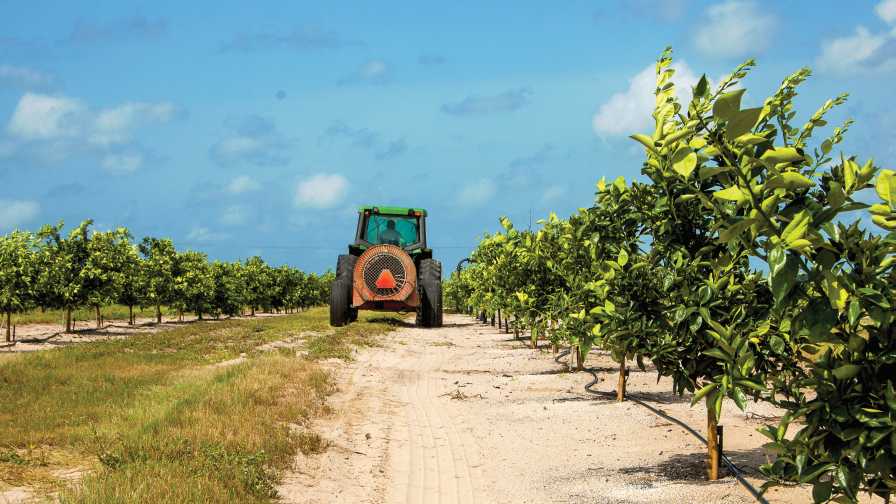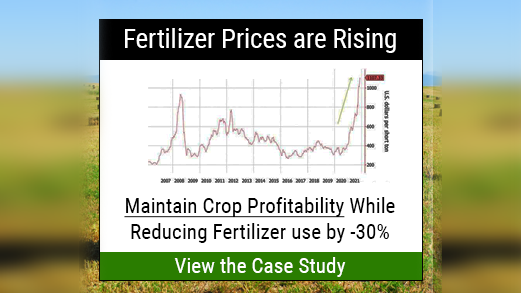Results in After Citrus Bactericides Put to the Test
 Beginning in March 2016, citrus growers in Florida were allowed to use streptomycin and oxytetracycline — collectively referred to as bactericides — in an attempt to manage HLB. The use of bactericides is expected to reduce the titer of the bacteria within HLB-affected trees, which, in turn is expected to improve the trees’ condition and, ultimately, increase yield.
Beginning in March 2016, citrus growers in Florida were allowed to use streptomycin and oxytetracycline — collectively referred to as bactericides — in an attempt to manage HLB. The use of bactericides is expected to reduce the titer of the bacteria within HLB-affected trees, which, in turn is expected to improve the trees’ condition and, ultimately, increase yield.
Back in July, I wrote an article on the topic, and by using a back of the envelope calculation, I estimated the break-even yield needed to cover the cost of a bactericide program. I also showed that, on a statewide basis, bactericides had not been able to put a halt on the downward trend of citrus yields.
This time, I’m addressing whether individual growers experienced an increase in yields in their groves one year after starting the use of streptomycin and oxytetracycline. To answer the question, I conducted a survey during the Florida Citrus Growers Institute in April. A total of 63 growers representing 153,357 acres participated in the survey, representing approximately one third of the total citrus acreage in Florida.
Adding Up Applications
When asked about whether they applied bactericides in 2016-2017, the vast majority of growers in the sample (92%) stated they did. To those growers that applied bactericides, I then inquired what was the number of applications they made since March 2016 and the annual cost per acre of their program. The largest percentage of growers in the sample (39%) made three applications, and the majority (51%) spent between $100 and $125 per acre in bactericides.
https://datawrapper.dwcdn.net/YJjXe/1/
https://datawrapper.dwcdn.net/XQ4o9/1/
Another issue I was interested in learning about was the pattern of substitutions of bactericides with other grove cultural programs. Thus, I asked growers whether they had reduced costs in other programs to offset the additional cost of introducing bactericides; 45% of the growers stated they had reduced their spending in other programs to accommodate bactericides’ applications. Much of the remainder of the questionnaire was intended to capture which programs growers cut back on, and what were the extent of such cuts.
Cutting Costs
From the responses of growers, I learned that insecticides, coordinated sprays, and dry fertilizer were the programs that they had reduced the most. The survey shows that 58% of growers who cut back on their programs reduced insecticides applications, and 43% out of those — the largest percentage across all programs — did so by more than 10%. In addition, 45% of growers reported they reduced coordinated or Citrus Health Management Areas (CHMA) sprays; 23% of them by more than 10%. The largest percentage of growers (64%) reduced the cost of dry fertilizer; 36% of them by more than 10%.
https://datawrapper.dwcdn.net/gkqeH/1/
Eye on Efficacy
Regarding the key question of whether growers have experienced an increase in yields in their groves as a result of applying bactericides, 49% stated yield had not increased, 21% did not know yet at the time of the survey, and 30% reported an increase in yield. A key aspect of the growers’ assessment in either case is whether they have an adequate control or comparison area to be able to determine whether it is the bactericides, or a change in other factors, that affect yield. Out of the 30% of growers who reported a yield increase, only 5% had a control to compare yields to. As a comparison, 18% of the growers who stated no yield increase had a control.
https://datawrapper.dwcdn.net/QdRFd/1/
Finally, I asked growers whether they were planning on using bactericides in their groves in 2017-2018. While 11% stated they were not — and 2% did not know yet — 87% of the respondents stated their plan was to continue using bactericides, which suggests they are expecting bactericides to have a positive effect over time.
Seeing Psyllids
The pattern of substitution between bactericides and insecticide sprays unveiled in the survey responses are particularly useful. The average psyllid population in Florida spiked in 2016, achieving an all-time-high that continued during 2017. The spike occurred shortly after the announcement allowing for the use of bactericides, which suggested that growers had started reducing insecticides applications and substituting them with applications of streptomycin and oxytetracycline.

From the results of the survey described above, I found evidence that growers had indeed reduced not only individual insecticides applications, but also coordinated insecticides sprays in CHMAs. Thus, psyllid population data suggests that the use of bactericides has had the unintended effect of increasing the psyllid population.
According to research recently compiled by several of my UF/IFAS colleagues (Lukasz Stelinski, Phil Stansly, Jawwad Qureshi, and Michael Rogers), there is evidence of psyllid field populations currently showing high to alarming levels of neonicotinoid resistance in Florida. They also report that resistance was on the rise for some classes of insecticides across the state in 2009, but fell back to susceptible levels in 2013 and 2014. Their hypothesis is that the implementation of CHMA sprays contributed to the improvement of psyllids’ susceptibility back then. It would then be sensible to argue that growers’ recent reduction in insecticides sprays — along with the resulting increase in the variability of insecticide use among them — and their reduction in coordinated sprays have had a compounding effect on psyllid populations and their susceptibility to insecticides; resulting in the all-time-high psyllid population level Florida is currently experiencing.
Thus, bactericides use and the pattern of substitutions growers made to accommodate its introduction into their budget, particularly with insecticides and CHMAs, seem to have contributed to psyllids’ insecticide resistance and, therefore, an increase in their population in Florida.










